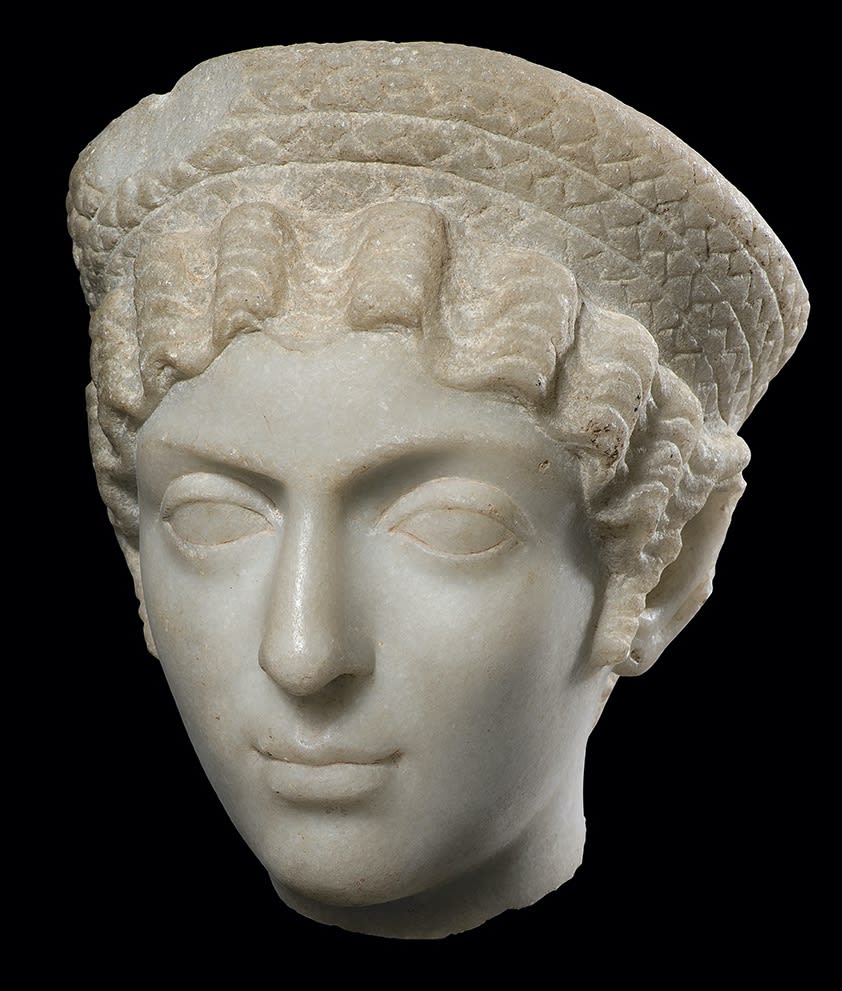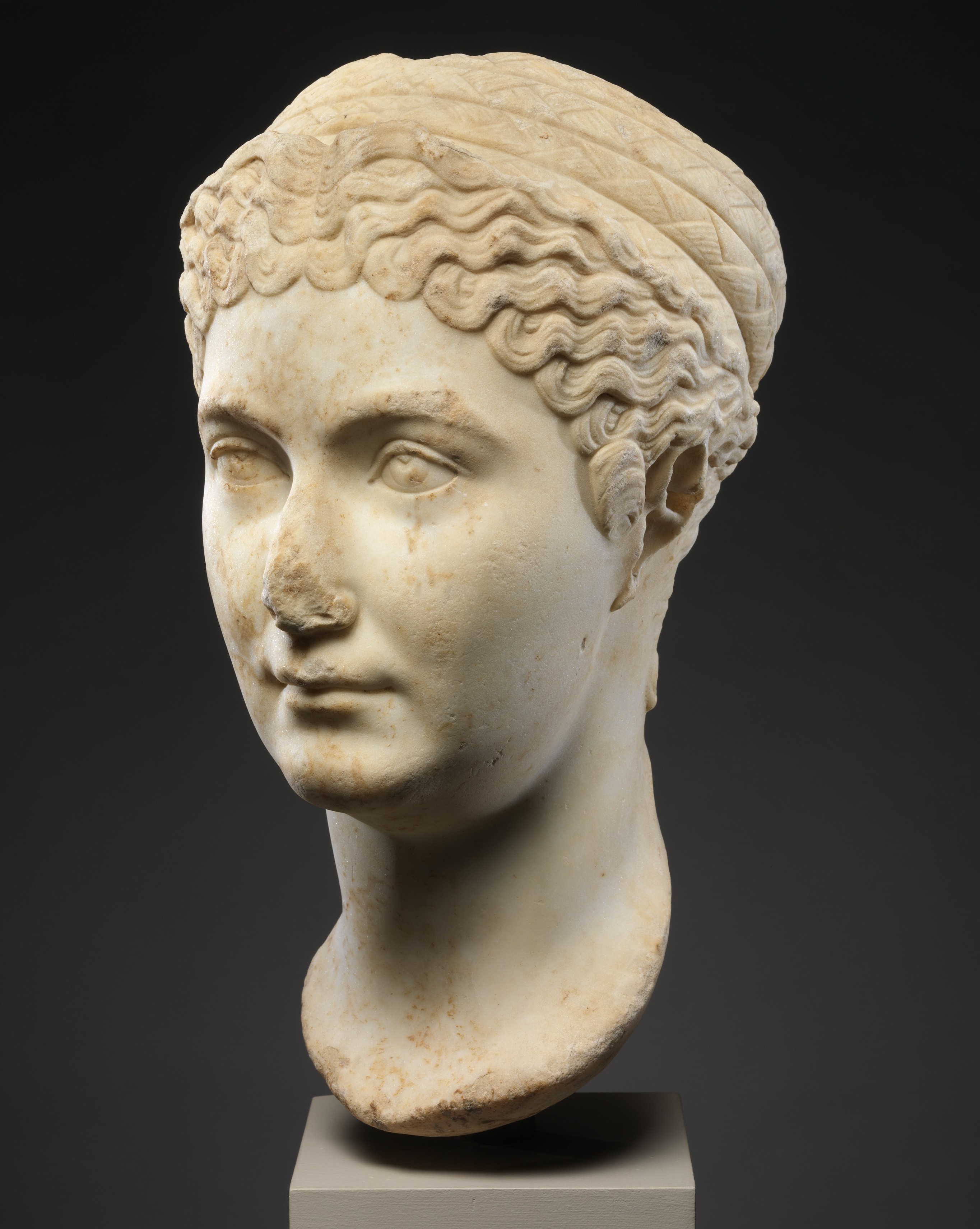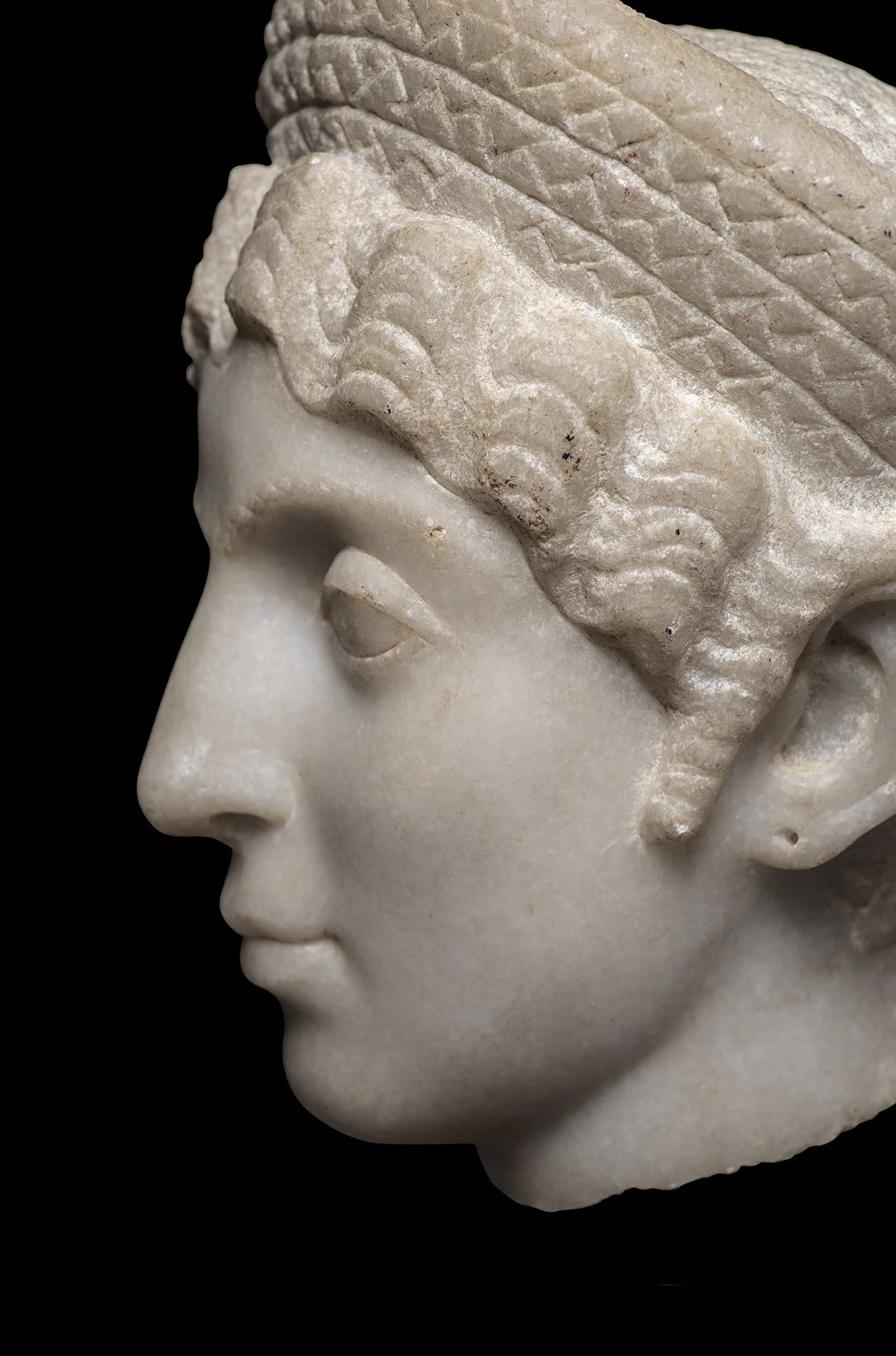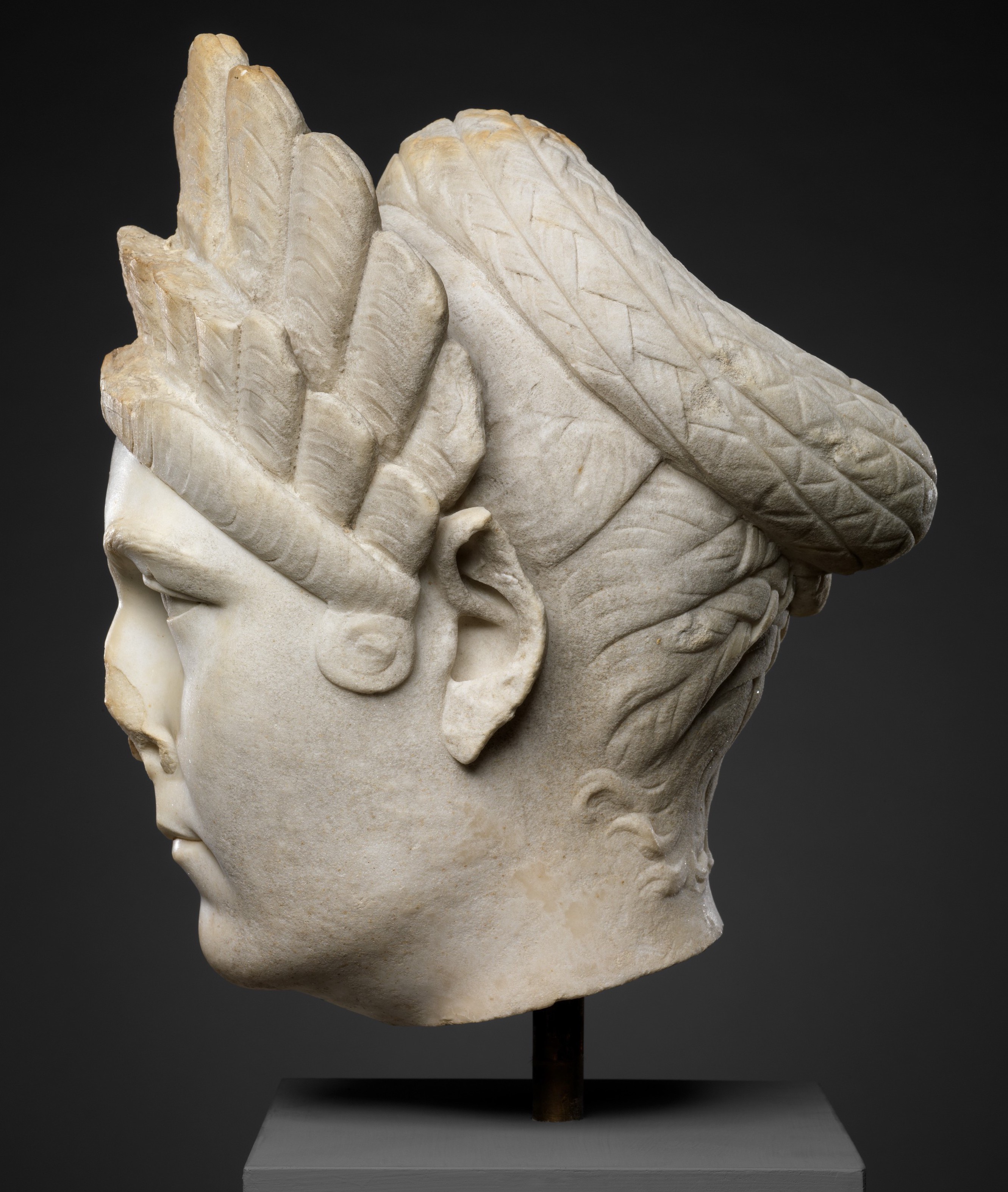A Roman Marble Portrait Head of a Woman

Early Hadrianic, circa AD 120 - 130
Height: 22.8 cm
With Kallos Gallery, POA
This very finely carved marble portrait depicts a young woman with an oval face enhanced with a slight smile, aquiline nose, large almond-shaped eyes, and incised brows. The most striking aspect is her elaborate coiffure of undulating curls that frames her forehead and is bound in a turban of coiled braids around the crown of the head.
The distinctive turban coiffure worn by this woman allows her to be dated to the Hadrianic period. The wide high plaited turban is seen in Imperial portraits of the period such as those of the Empress Sabina (the wife of Hadrian), Matidia Minor (half-sister of Sabina) as well as others of the Hadrianic court.

A Roman marble portrait of Matidia Minor, circa AD 138-161
The Metropolitan Museum of Art, inv.no. 21.88.35 (CC0 1.0)
Private depictions of wealthy women closely relate to those of women in the Imperial House. Portraits of empresses appeared in every city of the Empire through coins and public sculpture. In particular it was the elaborate hairstyles of the Imperial court that had a significant and highly visible influence on the coiffures of other women within the Roman world.
Appearance was hugely important to the Romans. Much time and energy was invested into presenting themselves in a way that would reflect their status and wealth. On a daily basis, how a woman styled and maintained her hair was one the strongest indicators of their place in society. As a result fashions spread across the Empire and the haircare industry soared.

The creation of such hairstyles however was arduous and time consuming. Therefore it is not surprising that only women of the leisured classes would have had the staff and time for lengthy hairdressing sessions.

A fresco depicting a women having her hair styled
From the Villa of the Mysteries in Pompeii, Italy, circa mid-1st century BC
(CC BY-SA 4.0)
Hairpins, nets, wire supports, curling irons and false hair pieces were all used, as well as setting solutions such as egg white. Henna and other dyes were also adopted in order to help transform a woman's natural locks into the desired finished look. Long hair extending well past the shoulders was a requisite for the intricate styles of the 2nd -3rd centuries. Long tresses could be formed into braids that would easily surround the head in the most lavish concentric arrangements.

A Roman marble portrait of Marciana, sister of the Emperor Trajan, circa AD 130-138
The Metropolitan Museum of Art, inv.no. 20.200 (CC0 1.0)
Ancient sources often take satirical aim at female coiffures, with many complaining that every day, so it seems, brings a different style. Juvenal remarked that a woman's head is "weighed down with layer on layer, tier after tier, piled high" (Satires, 6.502). Ovid went a step further and dedicated a whole elegy to the changing hair trends and its hazards:
"I told you to stop using that rinse,
And now you've no hair left to tint.
Why couldn't you let it be?........
You've only yourself to blame. You were asking for trouble applying that concoction.
But thanks to our German triumph you're quite safe.
One of the women prisoners can send you hers."
Ovid, Amores 1.14
Wigs were employed for the more elaborate hairstyles and these could be sewn into a woman's real hair to create more volume and drama. Human hair was imported from the far corners of the Mediterranean, as well as India. As Ovid mentions, hair was also taken as a spoil of war, with blonde hair from German captives being particular prized.

We can find further confirmation of styles in evidence of painted mummy portraits from Egypt, like the image above. The Fayum portraits depict coiffures that are identical to those worn by women portrayed in sculpted portraits from Rome and really help bring them to life. Getty Villa, inv.no.5304932007 (CC BY-SA 2.0)
Despite the variety of elaborate hairstyles, ultimately the underlying purpose of female Roman portraiture was to align with the favourable Imperial families, and reinforce the different social and political aims of the male family members.
However, at a time when a woman's life was restricted and many aspects forbidden to her, hairstyles allowed her to convey and express her individuality, which played a significant role in her personal identity. The artistic, archaeological and literary evidence available to us of Roman hair fashions offer a tantalising insight into this visual cultural language.
